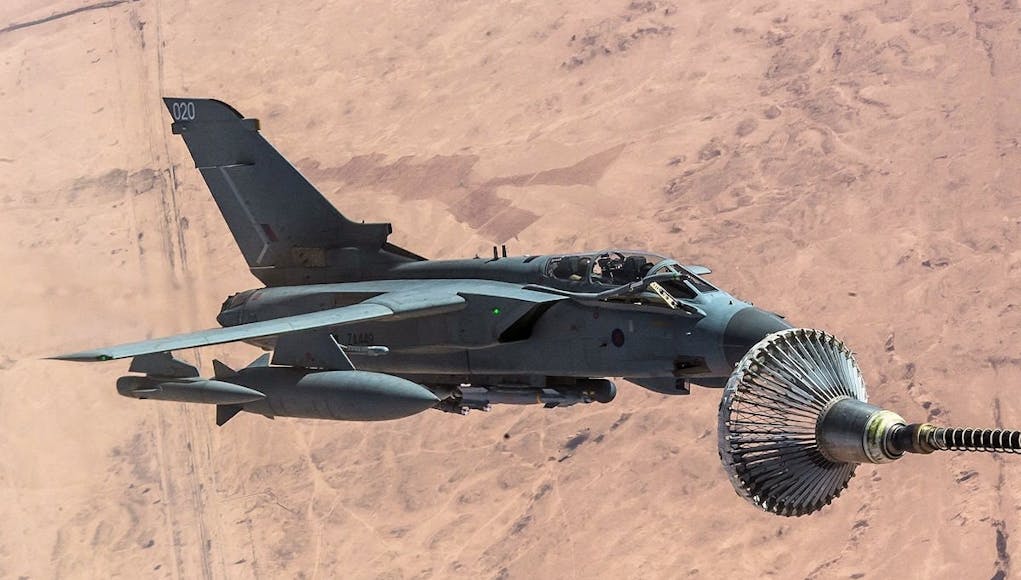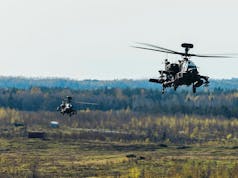The coalition has accelerated offensive activity against Islamic State in designated parts of Syria and Iraq throughout May and June, officials reported today.
Since the May 1 start of Operation Roundup, Syrian Democratic Forces resumed major offensive operations in the Middle Euphrates River Valley. Since then, the SDF has continued to gain ground through offensive operations coupled with precision coalition strike support. According to a release:
“CJTFOIR and its partner forces continue to exert pressure on ISIS’ senior leaders and associates in order to degrade, disrupt and dismantle ISIS structures and remove terrorists throughout Iraq and Syria. ISIS morale is sinking on the front lines, officials said, as privileged leaders increasingly abandon their own fighters on the battlefield, taking resources with them as they flee.”
Between June 18th and 24th, coalition military forces conducted 35 strikes, consisting of 39 engagements, in Iraq and Syria. These are listed below and were provided by Combined Joint Task Force Operation Inherent Resolve via a press release.
Strikes in Syria
On June 18, coalition military forces conducted a strike consisting of one engagement against ISIS targets near Shadaddi. The strike destroyed an ISIS tactical vehicle and an ISIS logistics hub.
On June 19, coalition military forces conducted eight strikes consisting of eight engagements against ISIS targets near Abu Kamal. The strikes engaged an ISIS tactical unit, and destroyed three ISIS supply routes, an ISIS supply cache, two ISIS logistics hubs and an ISIS vehicle.
On June 20, coalition military forces conducted four strikes consisting of four engagements against ISIS targets near Abu Kamal. The strikes engaged an ISIS tactical unit and destroyed two ISIS vehicles and two ISIS supply routes.
On June 21, coalition military forces conducted six strikes consisting of six engagements against ISIS targets:
— Near Abu Kamal, five strikes destroyed five ISIS supply routes.
— Near Palmyra, a strike engaged an ISIS tactical unit and destroyed an ISIS fighting position.
On June 22, coalition military forces conducted one strike consisting of one engagement against ISIS targets near Abu Kamal. The strike engaged an ISIS tactical unit and destroyed an ISIS vehicle.
On June 23, coalition military forces conducted seven strikes consisting of eight engagements against ISIS targets:
— Near Abu Kamal, three strikes engaged an ISIS tactical unit and destroyed an ISIS supply route and an ISIS vehicle.
— Near Shadaddi, four strikes engaged an ISIS tactical unit, and destroyed two ISIS vehicles and two ISIS mortar systems.
On June 24, coalition military forces conducted a strike consisting of one engagement against ISIS targets near Abu Kamal. The strike destroyed an ISIS supply route.
Strikes in Iraq
On June 18, coalition military forces conducted two strikes consisting of two engagements against ISIS targets near Rutbah. The strikes engaged an ISIS tactical unit and destroyed an ISIS vehicle.
On June 19, coalition military forces conducted two strikes consisting of three engagements against ISIS targets:
— Near Rutbah, a strike engaged an ISIS tactical unit.
— Near Kisik, a strike engaged an ISIS tactical unit.
On June 20, coalition military forces conducted a strike consisting of three engagements against ISIS targets near Rutbah. The strike destroyed three ISIS caves.
On June 21, coalition military forces conducted a strike consisting of one engagement against ISIS targets near Tal Afar. The strike destroyed an ISIS tunnel.
The list above contains all strikes conducted by fighter, attack, bomber, rotary-wing or remotely piloted aircraft; rocket-propelled artillery; and ground-based tactical artillery, officials noted. A strike, as defined by the coalition, refers to one or more kinetic engagements that occur in roughly the same geographic location to produce a single or cumulative effect.
For example, task force officials explained, a single aircraft delivering a single weapon against a lone vehicle is one strike, but so is multiple aircraft delivering dozens of weapons against a group of IS-held buildings and weapon systems in a compound, having the cumulative effect of making that facility harder or impossible to use. Strike assessments are based on initial reports and may be refined, officials said.














keep pummelling the scum